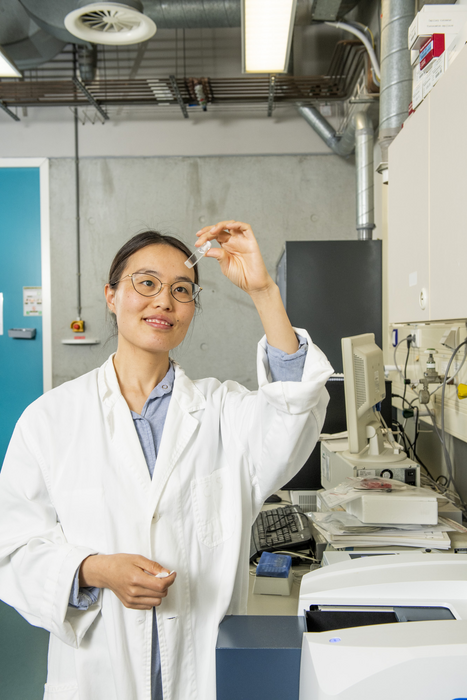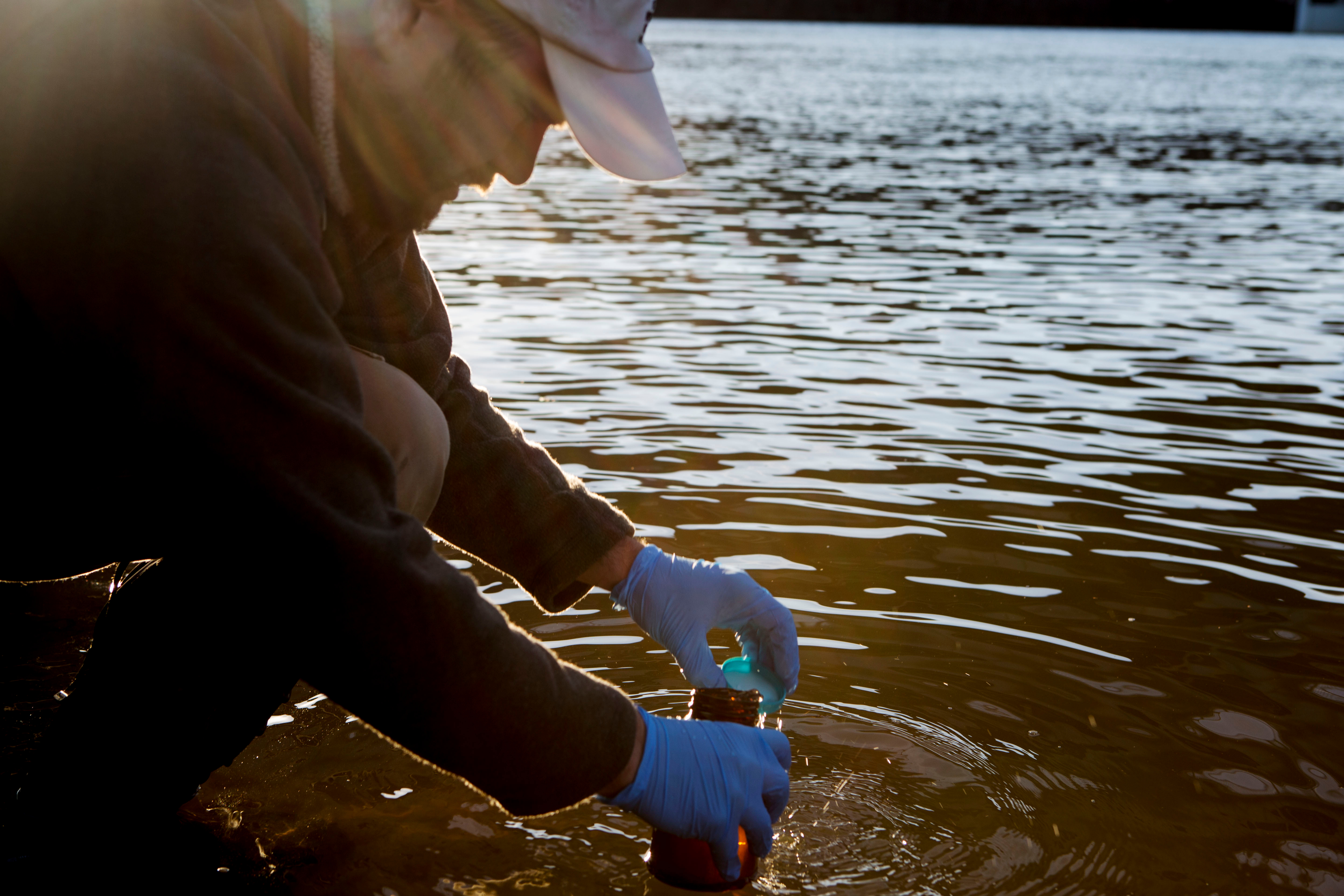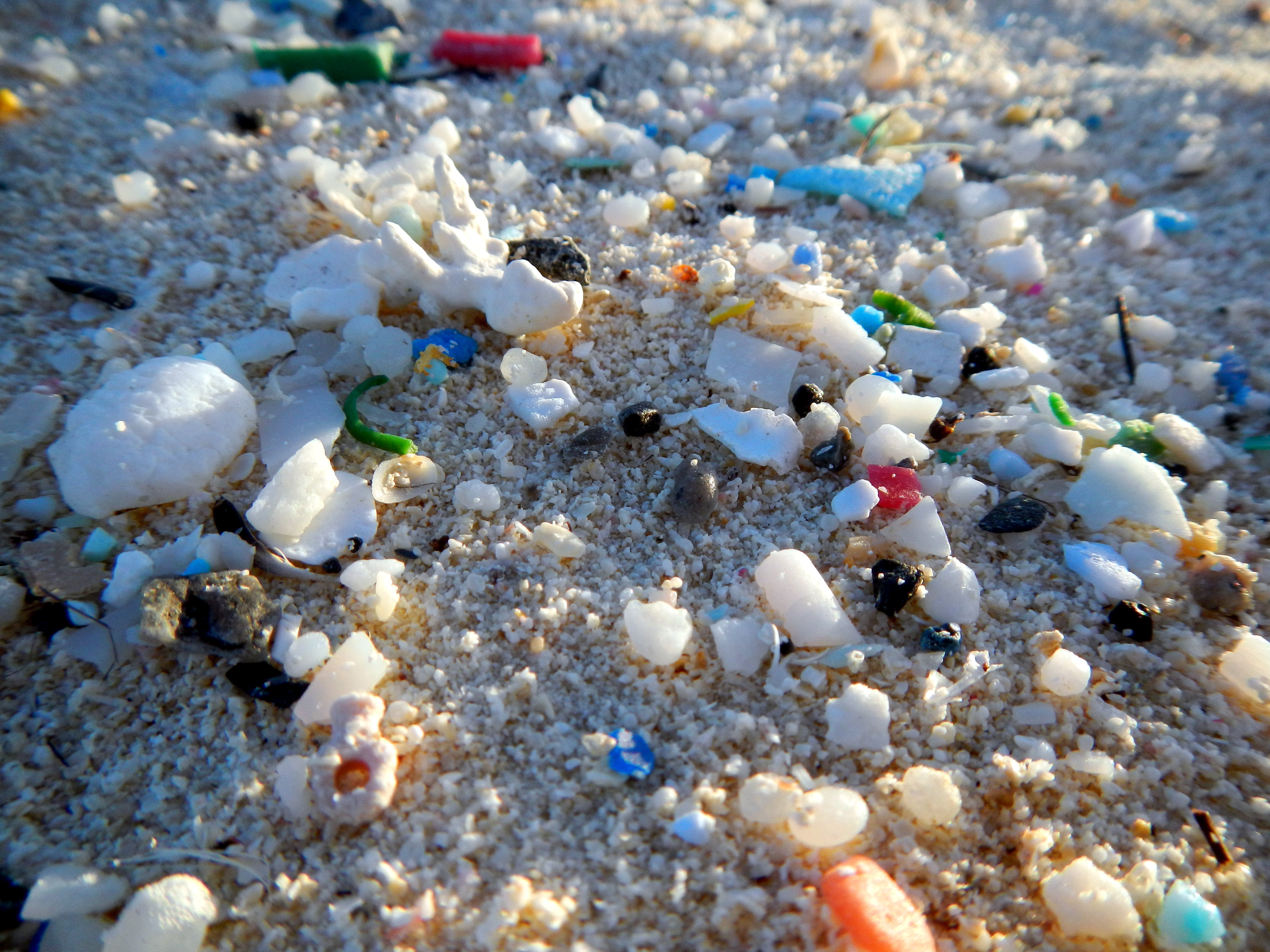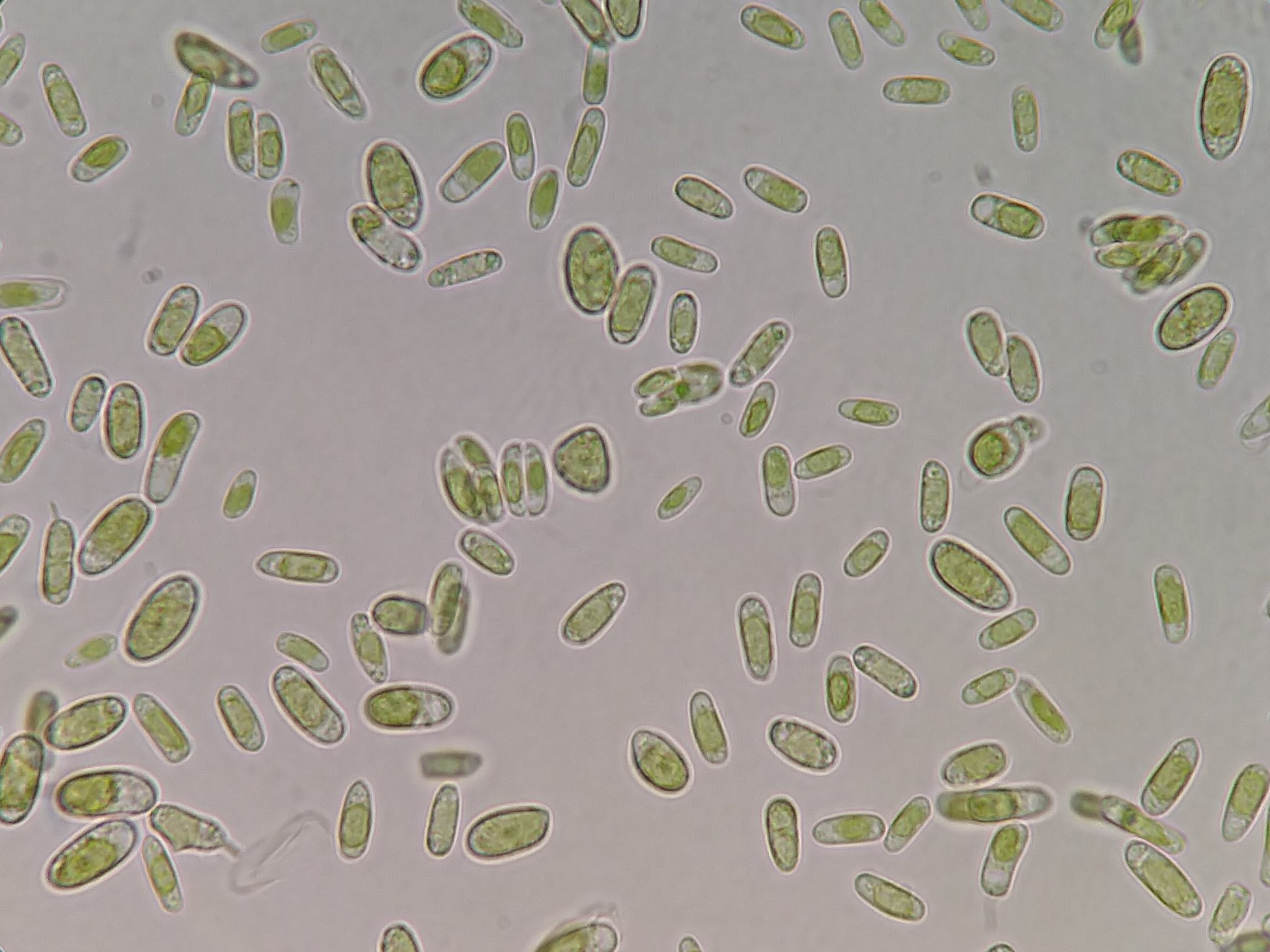Research from Washington University in St. Louis shows that a practice of purposeful water management, or irrigation, was adopted in northern China about 4,000 years ago as part of an effort to grow new grains that had been introduced from southwest Asia. But the story gets more complex from there. Wheat and barley arrived on the scene at about the same time, but early farmers only used water management techniques for wheat.
Tag: water
A lasting impact: microplastics settling into soil
Soils with high concentrations of microplastics could experience limited water flow
Monitoring soil moisture to protect forest and wildland systems
Symposium will feature presentations about modeling and coordinating soil moisture information in the United States
Where should the water go? A national look at prioritizing water optimization
Symposium features the latest techniques and science on water optimization priorities and methods in various areas of the United States
Wetlands case before the U.S. Supreme Court on Oct. 3 explained
Among the first cases to be heard by the U.S. Supreme Court for the October 2022 term will be Sackett v. EPA, No. 24-454 (2022). At stake is the definition of “waters of the United States” and the area of…

WashU Expert: Jackson water issues result of environmental racism
The increasing demand for electric vehicles and cell phones has accelerated the need for safer energy storage after numerous instances of commercial lithium-ion batteries overheating and catching fire. Peng Bai, assistant professor of energy, environmental & chemical engineering in the McKelvey School of Engineering at Washington University in St.
An extrasolar world covered in water?
An international team of astronomers has discovered an exoplanet that could be completely covered in water.
What are drain tiles?
Exploring an agricultural tool that works below the surface
Does dew provide water to plants?
Plant life in drier regions rely on an unsuspecting water source
Water Policy, Agriculture, Climate and Hydrology Experts Available for Insight
Arizona State University has an extensive roster of water policy, agriculture, climate and hydrology experts who can provide insight on the forthcoming Colorado River water cuts to be announced by the Federal Bureau of Reclamation around August 15. Expert profiles,…
Catching a Glimpse of the Reactive Intermediates in Water in a Trillionth of a Second
The proton-transfer and ionization process in water leads to the formation of a hydroxyl-hydronium complex, a type of hydroxyl radical. The formation process causes ultrafast structural changes and the redistribution of energy among neighboring water molecules. Thanks to recent developments in liquid phase ultrafast electron diffraction techniques, scientists can capture these processes in real time.

Latest discovery out of Lake Mead highlights unprecedented water levels amid megadrought
A World War II-era vessel recently surfaced amid the shrinking waters of Lake Mead, the latest example of the historically low water levels of the reservoir on the Arizona-Nevada border. The unprecedented decline stems from a prolonged megadrought in the…
How cover crops can protect the Chesapeake Bay
Planting cover crops early helps them hold onto more excess nutrients. That’s good news for the polluted Chesapeake Bay

Chemists find a contrary effect: How diluting with water makes a solution firm
In Science Magazine, TU/e researchers publish teir research on new phase transitions of solutions and gels in water, which instinctively go against the basic principles of chemistry – and which they discovered by accident.
Wayne State and Great Lakes Water Authority to create workforce and laboratory center of the future
Wayne State University has received a $584,114 contract to develop a collaborative research project with the Great Lakes Water Authority (GLWA) to create a workforce and laboratory center of the future in Detroit.
Climate changes lead to water imbalance, conflict in Tibetan Plateau
Climate change is putting an enormous strain on global water resources, and according to researchers, the Tibetan Plateau is suffering from a water imbalance so extreme that it could lead to an increase in international conflicts.
What’s in Water? Knowing How to Stay Hydrated This Summer
It’s especially important to stay hydrated now that the weather is hot, but many people may not be aware of how much water to drink, how often to drink, if there are significant differences between water brands, and more. To help, we spoke with Dr. Lucas Couch of Carroll Health Group.
Is there snow in that tree? Citizen science helps unpack snow’s effect on summer water supplies
To investigate what happens to snow intercepted by trees, UW researchers created a citizen science project called Snow Spotter.
‘Overdrawing the system’: Western water supply lags demand
With severe drought impacting the Western U.S. — including the Colorado River and its reservoirs — the federal government announced this week it is keeping more water in one of the river’s reservoirs, Lake Powell, instead of releasing it downstream…
UCI becomes two-time recipient of STARS Platinum rating for sustainability efforts
For a second time, the University of California, Irvine has achieved a rare platinum rating through the Association for the Advancement of Sustainability in Higher Education’s Sustainability Tracking, Assessment & Rating System, maintaining its status as one of the environmentally outstanding universities in the world.
Project aims to improve accuracy of climate change models
With a three-year, $500,000 grant from the National Oceanic and Atmospheric Administration (NOAA), scientists are working to improve climate models on which future water projections are based.
Eureka! A cost effective and quick way to find groundwater in arid regions
Water is a scarce commodity in many countries worldwide, but new cost effective technology pioneered by researchers in Australia, Egypt and Saudi Arabia could ensure sustainable water supplies for decades to come.
Do depressions in Canadian prairies hold the key to groundwater recharge?
Model shows climate change may impact environment by decreasing recharge
Drone helps researchers find fresh water in the sea at Easter Island
Researchers at Binghamton University, State University of New York have demonstrated the effectiveness of using drones to locate freshwater sources at Easter Island.
Mars habitability limited by its small size, isotope study suggests
Researchers measured the potassium isotope compositions of Martian meteorites in order to estimate the presence, distribution and abundance of volatile elements and compounds, including water, on Mars, finding that Mars has lost more potassium than Earth but retained more potassium than the Moon or the asteroid 4-Vesta; the results suggest that rocky planets with larger mass retain more volatile elements during planetary formation and that Mars and Mars-sized exoplanets fall below a size threshold necessary to retain enough water to enable habitability and plate tectonics.
Are there DBPs in that cup of tea?
Researchers reporting in Environmental Science & Technology measured 60 DBPs in three types of tea, unexpectedly finding lower levels in brewed tea than in tap water. However, they also detected many unknown DBPs with uncertain health effects.
UCI is No. 2 in Sierra magazine’s 2021 ‘Cool Schools’ ranking of sustainability leaders
Irvine, Calif., Sept. 9, 2021 — The green streak continues! Sierra magazine has named the University of California, Irvine No. 2 overall in its annual “Cool Schools” ranking of sustainability leaders among U.S. and Canadian universities and colleges, marking the 12th time in a row that UCI has placed in the top 10 of the widely acclaimed list.
Watercooler parts could be a source of organophosphate ester exposure
Researchers in ACS’ Environmental Science & Technology Letters report that organophosphate esters (OPEs) were found in water dispensed from watercooler systems, but they estimated that daily consumption would be far below the levels associated with health problems.
Uncertainty for farmers after water pollution rule scrapped
A federal judge on Monday scrapped a Trump administration rule that limited federal protections for streams, marshes and wetlands across the United States. The Biden administration had already sought to undo the policy and this ruling will allow for new…
In a first, scientists capture a ‘quantum tug’ between neighboring water molecules
Researchers have made the first direct observation of how hydrogen atoms in water molecules tug and push neighboring water molecules when they are excited with laser light.

WVU faculty receive $125,000 to tap into water research issues in West Virginia
Paul Ziemkiewicz, director of the West Virginia Water Research Institute, said the funds are critical for engaging young faculty in water research and for nurturing new and larger research opportunities.

Why Remote Work Might Worsen Southwest Water Woes
As concerns flare over record-low water levels at Lake Mead, a new UNLV study shows that COVID-19 pandemic stay-at-home orders — and a subsequent societal shift to remote work — may be exacerbating the problem.
Tile drainage impacts yield and nitrogen
Draining waterlogged farm fields helps crops but can leach nitrogen into waterways. A three-decade-long experiment is helping farmers strike the right balance.
National Geographic Society grant to fund research into Easter Island
Binghamton University anthropologists Robert DiNapoli and Carl Lipo received a $60,280 grant from the National Geographic Society’s Committee for Research and Exploration to explore how ancient populations managed freshwater scarcity.
Bioreactors chip away at nitrogen pollution
A recent study shows bioreactors effectively remove nitrogen over time
Finding pathways for sustainable development in Africa
A new project funded by the Belmont Forum will develop novel tools and capacities to understand and manage interlinkages between the Sustainable Development Goals (SDGs), and support sustainable development pathways for African countries.
Expert: The ‘silver bullet’ to the West’s water crisis lies not in Lake Mead but in what we feed our cattle
With water levels in Lake Mead dropping at an alarming rate, the western United States needs to look to other solutions to meet its water needs. That solution can be as simple as changing the way farmers fallow land, which…
Decisions, Decisions: Climate Change and Water
PNNL’s Framework for Assessment of Complex Environmental Tradeoffs (FACET) is designed to navigate and rigorously evaluate competing environmental, economic, and social impacts to help make decisions more equitable. In an example scenario prepared using publicly available data, FACET was applied to predict tradeoffs facing the Colorado River and to balance competing demands of river flow and temperature, along with withdrawals for cities, crop irrigation, and power generation.
Laser-focused on Supercooled Water
PNNL’s infrared pulsed heating technique reveals supercooled water’s weird behavior; opens door to other fluid studies at new Energy Sciences Center.
Clean Water for All
New research findings aid in the design of more efficient water purification technologies.
Nanoscale sensors measure elusive water levels in leaves
A breakthrough technology uses nanoscale sensors and fiber optics to measure water status just inside a leaf’s surface, providing a tool to greatly advance our understanding of basic plant biology, and opening the door for breeding more drought-resistant crops.
Warm ice may fracture differently than cold ice
Researchers at Aalto University in Finland have found strong evidence that warm ice – that is, ice very close in temperature to zero degrees Celsius – may fracture differently than the kinds of ice typically studied in laboratories or nature. A new study published in The Cryosphere takes a closer look at the phenomenon, studied at the world’s largest indoor ice tank on Aalto’s campus.
Megaprojects threaten water justice for local communities
Urban megaprojects tend to be the antithesis of good urban planning. They have a negative impact on local water systems, deprive local communities of water-related human rights, and their funders and sponsors have little accountability for their impact.
CUR Geosciences Division Announces 2021 Awardees for Excellence in Student Research
The Geosciences Division of the Council on Undergraduate Research announced the 2021 awardees for excellence in student research: Zoe Lacey (Trinity University) and Hanna Szydlowski (Grand Valley State University)
Rutgers Expert Available to Discuss Spring Allergy Season in N.J.
New Brunswick, N.J. (April 20, 2021) – Rutgers University–New Brunswick allergy specialist Leonard Bielory is available for interviews on the spring allergy season in New Jersey. “One can expect a brisk allergy season this year since we had a lot…
Sunlight to solve the world’s clean water crisis
Researchers at The University of South Australia’s Future Industries Institute have developed technology that could eliminate water stress for millions of people, including those living in many of the planet’s most vulnerable and disadvantaged communities.
Global river flow contingent upon climate change
New study shows that as climate change impacts extreme river flows, it could be worsening flooding or increasing water scarcity during dry seasons
Washington University to develop lunar resource utilization technology for NASA
Power and in-situ resources are two things humans will need as they explore deep space. How future astronauts use these commodities depends on the technology at hand. That’s why NASA is looking to U.S. universities — including Washington University in St. Louis — for lunar-focused research to bring about advancements in in-situ resource utilization and sustainable power solutions.

Microplastic Sizes in Hudson-Raritan Estuary and Coastal Ocean Revealed
Rutgers scientists for the first time have pinpointed the sizes of microplastics from a highly urbanized estuarine and coastal system with numerous sources of fresh water, including the Hudson River and Raritan River. Their study of tiny pieces of plastic in the Hudson-Raritan Estuary in New Jersey and New York indicates that stormwater could be an important source of the plastic pollution that plagues oceans, bays, rivers and other waters and threatens aquatic and other life.

Bacteria and Algae Get Rides in Clouds
Human health and ecosystems could be affected by microbes including cyanobacteria and algae that hitch rides in clouds and enter soil, lakes, oceans and other environments when it rains, according to a Rutgers co-authored study.